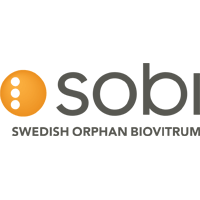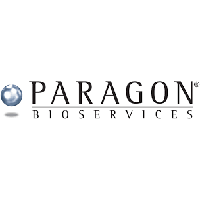
More orphan approvals and rising prices have made payers more sensitive about reimbursement. If high prices lead to drugs not being covered or cost-sharing becoming unaffordable, patient access could be affected. The decision to reimburse a million-dollar drug will most likely depend on the drug’s value and not its price alone.
Full Answer
What is the cost of orphan drug treatment?
Annual orphan drug treatment costs may approach $500,000. High costs coupled with relatively sparse supportive clinical data and difficulty in meeting standard cost-effectiveness benchmarks raise significant issues for payers in allocating finite budgetary resources.
Should the drug industry impose price controls on orphan diseases?
The drug industry and patient advocacy groups have been leery about the imposition of price controls or restrictions on reimbursement for drugs that treat orphan diseases.
Is there a regional divide in reimbursement for orphan drugs?
This regional divide creates a regarding reimbursement for orphan drug s. Then, there is the issue of socie tal common disease. Some countries within the EU may allow free pricing (manufacturer’s choice) although such provisions are ending in the UK (2014) and Germany (2011). adopt a ring-fenced fundin g scheme.
How do high orphan approvals affect patient access?
Increased numbers of orphan approvals coupled with rising prices have led to greater payer sensitivity about reimbursement. High prices – such as the $1 million tag on now-defunct Glybera – could affect patient access, either by complete non-coverage or when cost-sharing rises to an unaffordable level for patients.

How are orphan drugs reimbursed?
Orphan drugs must also be reimbursed from public funds to be accessible to patients, particularly as their prices are usually significantly higher than those of drugs for common diseases. Reimbursement decisions are increasingly based on health technology assessment (HTA), usually entailing economic evaluation.
Are orphan drugs covered by Medicare?
Medicare Plans' Coverage of Orphan Drugs—Stand-Alone PDPs and MA-PDs. The coverage rate (percentage of plans covering a drug) for orphan drugs among Medicare prescription drug plans is high. On average, an orphan drug is covered by 84 percent (standard deviation: 24 percent) of stand-alone PDPs.
What are the incentives for orphan drug development under the Orphan Drug Act?
The law provides three incentives: (1) 7-year market exclusivity to sponsors2 of approved orphan products, (2) a tax credit of 50 percent of the cost of conducting human clinical trials, and (3) Federal research grants for clinical testing of new therapies to treat and/or diagnose rare diseases.
What is the most important incentive that is received when a drug is designated an orphan drug?
Orphan drug designation qualifies sponsors for incentives including: Tax credits for qualified clinical trials. Exemption from user fees. Potential seven years of market exclusivity after approval.
What are examples of orphan drugs?
An orphan drug can be defined as one that is used to treat an orphan disease. For example, haem arginate, used to treat acute intermittent porphyria, variegate porphyria, and hereditary coproporphyria [12], is an orphan drug.
Is stelara an orphan drug?
Ustekinumab (as sponsored by the innovator drug company) has been granted orphan drug designation by the FDA for “treatment of type 1 diabetes mellitus patients with residual beta-cell function” in November 2010, for “treatment of pediatric Crohn's disease (0 through 16 years of age)” in May 2016, for “treatment of ...
What are the benefits of orphan drug status?
Incentives of Orphan Drug Designation7-year marketing exclusivity to sponsors of approved orphan products.25% federal tax credit for expenses incurred in conducting clinical research within the United States. ... Waiver of Prescription Drug User Fee Act (PDUFA) fees for orphan drugs.More items...•
Do investors value the FDA orphan drug designation?
The results indicate that the designation has been successful in this area: investors place positive, statistically significant, value on the orphan drug designation. These results were especially pronounced for oncology drugs and the smallest companies.
Why has the Orphan Drug Act been successful?
Many researchers and policy makers have credited the Orphan Drug Act—in particular, its guarantee of seven years of market exclusivity—with this success, citing the surge in drugs for rare diseases as evidence that legislative grants of market exclusivity work to generate pharmaceutical innovation.
How does the FDA determine orphan drug sameness?
The orphan drug regulations define “same drug” for a drug composed of large molecules (macromolecules) as a drug that contains the same principal molecular structural features (but not necessarily all of the same structural features) and is intended for the same use or indication as a previously approved drug, except ...
Does orphan drug status expire?
New chemical entity (NCE) exclusivity expires after five years (sometimes four); orphan drug exclusivity ends after seven years; and even Reference Product exclusivity expires eventually – after a whopping 12 years.
Are orphan drugs profitable?
As a result, hundreds of new rare-disease treatments have entered the market over the past few decades, and orphan drug development has become a highly profitable industry.
Is biopharma moving fast?
Biopharma is not moving as quickly, and it confronts a strategic dilemma on how to address the prospect of a much more powerful set of rivals in the ongoing battle to own the patient experience in medicine.
Is Luxturna cost effective?
Luxturna, a one-time treatment for a rare inherited form of blindness, would not be cost-effective at the $1m price level that has been suggested as a possibility, based on ICER's thresholds. But the small patient population would keep it from triggering ICER's US budget spending threshold.
Author: Informa Pharma Intelligence
More orphan approvals and rising prices have made payers more sensitive about reimbursement. If high prices lead to drugs not being covered or cost-sharing becoming unaffordable, patient access could be affected. The decision to reimburse a million-dollar drug will most likely depend on the drug’s value and not its price alone.
Publisher: InVivo
More orphan approvals and rising prices have made payers more sensitive about reimbursement. If high prices lead to drugs not being covered or cost-sharing becoming unaffordable, patient access could be affected. The decision to reimburse a million-dollar drug will most likely depend on the drug’s value and not its price alone.
What is the European healthcare system?
The European Medicines Agency (EMA) centrally regulates the marketing authorization of new medicines in Europe. However, the health sys-tems are not part of the Lisbon Treaty and therefore in the national accountability of the individual Eu-ropean Union (EU) member states. This means 28 different ways of market access and reimbursement.
Is there an extra pathway for orphan drugs in the EU5?
In general, there is no extra pathway for orphan drugs in the EU5 with respect to market access, pric-ing and reimbursement. The main pathways for market access, pricing and reimbursement remain, but with some exceptions that differ country by country. Tables 1 to 5 describe the different situations in each country.
